In an effort to put patients at the center, pharmaceutical companies are starting to gather input from patients earlier in the clinical trial process.
Amid growing recognition that patients need to be part of the decision-making process in order to increase the effectiveness of the study, the pharmaceutical industry has begun to include patient input in clinical trial design. In addition, the FDA has been working on developing a framework for the process of collecting and submitting patient input to improve clinical trial design.
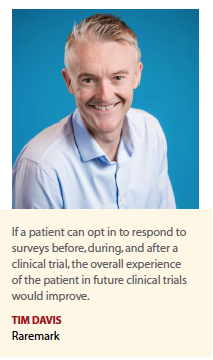 IQVIA’s 2019 patient survey found that if patients are going to be part of clinical research, they want feedback, including access to their trial data (89%), updates about upcoming trials (81%), study statistics (78%), and reminders and calendar tools (52%) to make participation easier. When this transparency is lacking, they are less likely to stick around.
IQVIA’s 2019 patient survey found that if patients are going to be part of clinical research, they want feedback, including access to their trial data (89%), updates about upcoming trials (81%), study statistics (78%), and reminders and calendar tools (52%) to make participation easier. When this transparency is lacking, they are less likely to stick around.
Experts agree that patients must be the center of clinical research from development to delivery of a drug to market in order to understand the patient journey and patients’ daily struggles when living with a condition.
“At this time, a minority of pharma companies are engaging patients at the beginning of discovery before trial design, but many more should," says Sandra Shpilberg, managing director, Eversana Engage. “Of the companies that do engage patients early on, the majority of those work on a rare disease. In rare diseases, biopharmaceutical companies operate on a different paradigm in which closeness to the patient community must be established as early as possible. Before trial design is a great time to gather a group of patients with the same condition and their caregivers to better understand the burden of the disease, and what would be optimal for clinical trial design. This can be accomplished via a series of in-person or online advisory boards, with a platform specifically designed to find the patients to participate in such efforts."
“Insight from patient-centric trials can present a new, distinct type of information to pharmaceutical companies," says Bob Geho, CEO at Diasome.
Erica Prowisor, global head of patient access, recruitment and retention, IQVIA, says insights gathered from the patient must be incorporated in patient recruitment and retention, through to the conclusion of a trial.
“Overall, there is a growing realization that patient recruitment, retention, and engagement cannot be solved through one-track improvements only," Ms. Prowisor says. “Orchestration is the new paradigm."
Many feel efforts to incorporate patient input don’t go far enough, pointing out that the difficulty in getting patients engaged and the rising costs of clinical trials underscore that gaps still exist.
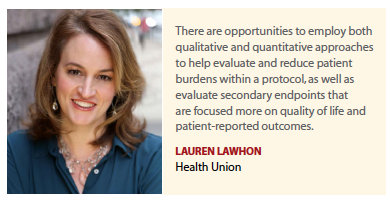 “By focusing only on protocol design, sponsors fail to include the patient voice in many earlier decisions that impact a drug program, and ultimately the patient experience," says Lori Abrams, senior director, advocacy, at WCG.
“By focusing only on protocol design, sponsors fail to include the patient voice in many earlier decisions that impact a drug program, and ultimately the patient experience," says Lori Abrams, senior director, advocacy, at WCG.
Tim Davis, CEO of Raremark, says while pharma companies focused on rare diseases are increasingly engaging with patients before trial design, it’s less common in other disease categories.
Indeed, Michael Keens, chief operating officer at Firma Clinical, says from his experience, aside from rare indications, most pharma/advocacy interactions take place through the commercial organizations in companies, therefore much later in the development process.
“This may be the result of funding allocations within pharma or the preference for pharma to focus on science and signal in the discovery group and limit the investment in time and money until the asset has a more promising pathway in the treatment or indication confirmation," he says. “This is understandable, but it is still a missed opportunity to begin establishing a connection between organizations earlier in the process."
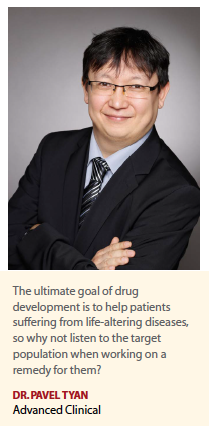 Lauren Lawhon, chief operating officer, Health Union, says based on research her company has done and conversations with its online health communities, it seems very few pharma companies are engaging with patients during discovery, prior to trial design.
Lauren Lawhon, chief operating officer, Health Union, says based on research her company has done and conversations with its online health communities, it seems very few pharma companies are engaging with patients during discovery, prior to trial design.
“We did a study in 2016 to better understand how and to what degree patient advocates want to be involved in clinical trial design," she says. “One quote that stood out was a clinical trial participant who said: ‘I was never asked what I expected to happen; I was told what to expect.’"
Pavel Tyan, M.D., therapeutic area lead, oncology, Advanced Clinical, believes that patient input should begin after a compound, at the effective dose, is proven safe by regulatory agencies, and the preliminary signals of the efficacy are obtained.
Improving the Experience
Experts agree that there is still much that needs to be done to advance the patient experience, protocol design and execution, recruitment, and retention process.
Dialogues with patients and advocacy groups should begin as early as possible and the relationship needs to be maintained throughout the program. This advisory group can partner with the clinical team to discuss medication issues, travel and logistics, build recruitment materials, facilitate site identification, participate in investigator meeting panels, and advise on wearables if necessary, Ms. Abrams says.
Engaging with patients at the beginning of the discovery phase can help researchers develop a deeper understanding of the day-to-day experiences of life with the condition, what is most meaningful to them, and burdens patients experience with current therapies, Ms. Lawhon says.
A survey of 4,000 patients and caregivers about their attitudes toward clinical research recently conducted by Antidote found that despite popular belief, patients actually are interested in taking part in clinical trials. “They just need to be approached in a way that resonates," says Lindsey Wahlstrom-Edwards, head of partnerships, Antidote.
Engaging with patients in the design phase can help companies identify their priorities and goals, which is especially important when treating chronic diseases where there is a careful balance between minimizing the burden of the patient and maximizing the effectiveness of a treatment, says Nader Pourhassan, Ph.D., president and CEO, CytoDyn.
“Gathering a deeper understanding of what patients are going through can help to justify measuring more patient-reported outcomes, such as a decrease in fatigue, missed days of work, or improvements in mental and social health that can be impacted by treatment efficacy and tolerability," Ms. Lawhon says.
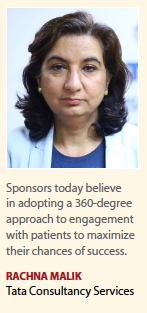 According to Natalie Douglas, cofounder, RareiTi, patients can influence the development programs for new treatments, particularly in rare disease and Patient-Centered Outcomes Measures (PCOMs). “Poorly understood natural history of a condition can sometimes lead to misconceptions about what affects patients at different stages of disease," she says. “Outcomes considered critical by clinicians are not the same as the priorities of patients. Patients can help define which outcomes to measure that have a meaningful treatment benefit. For example, in idiopathic pulmonary fibrosis or Duchenne muscular dystrophy, patients helped to resolve the disputes over the relevance of the forced vital capacity and six-minute walk test as study endpoints to predict treatment benefit. Patients also can influence studies to measure the right outcomes that resonate with patients’ daily experience of the disease, preferences, expectations and values in the right patients across a continuum of disease severity and manifestations."
According to Natalie Douglas, cofounder, RareiTi, patients can influence the development programs for new treatments, particularly in rare disease and Patient-Centered Outcomes Measures (PCOMs). “Poorly understood natural history of a condition can sometimes lead to misconceptions about what affects patients at different stages of disease," she says. “Outcomes considered critical by clinicians are not the same as the priorities of patients. Patients can help define which outcomes to measure that have a meaningful treatment benefit. For example, in idiopathic pulmonary fibrosis or Duchenne muscular dystrophy, patients helped to resolve the disputes over the relevance of the forced vital capacity and six-minute walk test as study endpoints to predict treatment benefit. Patients also can influence studies to measure the right outcomes that resonate with patients’ daily experience of the disease, preferences, expectations and values in the right patients across a continuum of disease severity and manifestations."
Dr. Tyan says more recently pharma has been incorporating various patient-reported outcomes into study objectives to improve overall patient experience in clinical trials.
“By incorporating the patient’s perspective into the development of early-phase trials, pharma would be able to create a more balanced study design and reduce the patient’s burden without compromising the study results," he says.
Companies could start by investing in the infrastructure needed to support ongoing, efficient collection and integration of patient perspectives across all 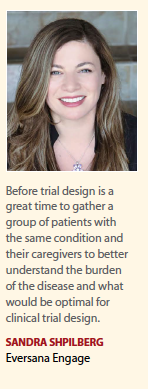 clinical trials a company sponsors, says Cheryl Lubbert, president and CEO, Health Perspectives Group.
clinical trials a company sponsors, says Cheryl Lubbert, president and CEO, Health Perspectives Group.
That means engaging with patients to understand why they participate in clinical trials — generally furthering their own care and advancing medical progress — honoring their motivations, and investing in an alumni program that keeps patients connected when the trial ends, Ms. Lubbert says.
“There are already some areas where patients have expressed the need for improved patient experience in clinical trials, including improving access to trial enrollment," Mr. Geho says. “Most patient populations are heterogenous, across age, sex, socioeconomic status, residence, and so on. Improving access to clinical trials will help obtain the most relevant knowledge and more applicable results."
Ms. Prowisor says when pharma companies leverage analytics to find and recruit patients and create more patient-friendly trial experiences they have a much better chance of engaging patients and meeting their recruitment goals.
Companies should also work to quantify the patient experience in clinical trials to determine when and why patients drop out, says Helen Green, VP, account director, Langland US.
“Getting feedback from patients after their participation is often overlooked," Ms. Green says. “A short survey to allow patients to reflect on their experiences will not only make their opinion feel valued, but also help better prepare for future studies."
Raremark worked with a client to use one of the organization’s established communities to identify patients who had participated in the client’s study and to provide a qualitative survey on their experiences.
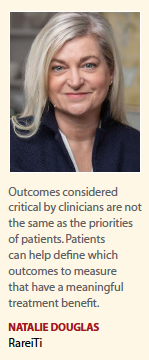 “Moving forward it would be ideal if all participants are enrolled into the community so that we can provide an even deeper experience," Mr. Davis says.
“Moving forward it would be ideal if all participants are enrolled into the community so that we can provide an even deeper experience," Mr. Davis says.
Rhonda Henry, VP, site networks and patient centricity, PPD, says consistently capturing patient insights through embedded and exit interviews enable companies to learn from the patient experience and use that information to improve future studies.
“Clinical trials have a checkered past that still negatively impacts perceptions of participation in a study," Ms. Henry says. “Using information that caters to varying degrees of health literacy is essential to starting conversations."
Transcelerate Biopharma conducted a study of 14 companies, none of which had a consistent companywide process for asking for feedback from clinical study participants, though three of the 14 received feedback after a clinical study ended. Only four of 14 asked for feedback about logistics during clinical studies.
“While making good progress, the industry has the opportunity to advance its efforts in this important area," says Michele Teufel, patient experience initiative lead, Transcelerate Biopharma, and feasibility and recruitment partner, development operations, AstraZeneca.
Rosamund Round, VP, patient innovation center, Parexel, says in addition to getting feedback from patients to find out what was challenging, the company engages with nurses about their experience to improve access to and experiences in clinical research as well as market access.
Abigail Mallon, senior VP, strategic account management and chief compliance officer at VMS BioMarketing, says clinical trial nurse educators (CTNEs) can vastly improve the patient experience in clinical trials because they have an innate ability to empathize, understand the patient’s perspective, and work collaboratively with trial sites in support of patients.
“Clinical trial teams are likely responsible for hundreds of tasks every day, but CTNEs can be totally focused on the patient experience," Ms. Mallon says. “They help ensure protocol consistency and compliance through patient training, setting trial expectations, providing patient-focused communication to reduce confusion and stress. CTNEs break down the complexities of the trial and put it into patient-friendly language so they truly understand how it all works and what will be required."
Ms. Mallon adds that CTNEs are now being used in the prescreening activities to 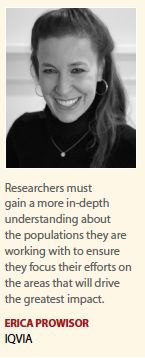 walk patients through the trial criteria and to set the right expectations for what they are signing up for.
walk patients through the trial criteria and to set the right expectations for what they are signing up for.
Jeff Terkowitz, VP, product, Inspire, says identifying places where patients are discussing clinical trials can be a viable source of insight into the patient journey.
“In one patient experience study we did, we found that the reason that many patients dropped out of a clinical trial at one particular site was because the beds and pillows were not comfortable," he says. “Developing a centralized application that delivers a VIP hospitality-like experience for patients through their smart phones — from searching for trials through enrolling and participating in a study — can augment the ability to identify experience gaps that were previously unknown. For example, a growing number of digital sensors and wearable devices are now being used to help monitor patients’ quality of life throughout clinical trials by collecting passive data such as sleep quality, urine analysis, and other biometrics."
Leonard Sender, M.D., senior VP of medical affairs for pediatric, adolescent, and young adult oncology, at NantKwest, recommends including patients on 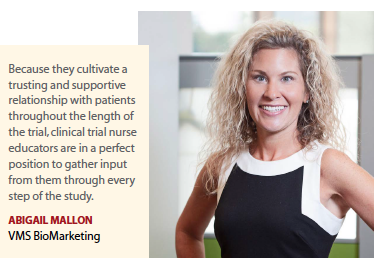 Institutional Review Boards, which are charged with assessing the safety and ethics of clinical trial designs.
Institutional Review Boards, which are charged with assessing the safety and ethics of clinical trial designs.
“Patients are welcome participants on such boards but are rarely included, usually because IRBs favor boards staffed entirely by physicians and hospital administrators," he says.
Platforms for Engagement
There’s no doubt that patient advocacy groups are invaluable resources when seeking feedback. Other valuable resources are organizations with large patient databases or registries, which can survey patients electronically.
According to Mr. Davis, a more in-depth approach when soliciting patient input could be achieved through long-term engagement with machine learning and behavioral modelling.
While AI can enable companies to mine massive amounts of qualitative and quantitative data to uncover hidden insights, Ms. Prowisor cautions that uncovering insights is as much about asking the right questions as it is about leveraging data.
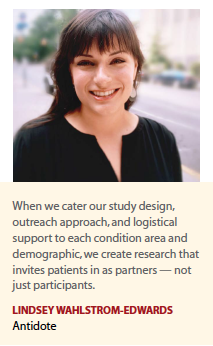 “True insights can only occur if the data is captured in an unbiased and representative way that accurately embodies the full patient experience," she says.
“True insights can only occur if the data is captured in an unbiased and representative way that accurately embodies the full patient experience," she says.
Other creative ways to support a positive patient experience include iPads loaded with entertainment and the ability to schedule visits outside of normal business hours, Ms. Henry from PPD says.
Empowering patients during clinical trials through devices — wearables, smart devices, etc.; educational resources; digital communication — personalized notifications, digital labels, audio and voice enabled data collection; behavioral insights, etc. that reviews progress in trial and takes proactive action for patient retention is crucial, says Rachna Malik, global head, advanced drug development platforms, Tata Consultancy Services.
Disease-specific conferences are a good place to start to hear how families are coping with an illness, to hear from experts in the field, and to meet advocacy groups, Ms. Abrams says.
Dr. Sender adds that there is already quite a bit of patient input from conversations on social media platforms like Facebook and Twitter.
“Pharmaceutical companies can engage social media specialists, who can conduct social listening reports to collect and sort social content posted by self-described patients to determine patterns in goals, wishes and complaints related to their care," Dr. Sender says.
Surveys are also useful ways to gauge opinion. In its 2016 study about patient contributions to clinical study design, Health Union asked participants to identify which parts of the design process they thought might provide the most meaningful input. “Patients consistently selected ‘identifying challenges’ and ‘creating patient communication’ as the steps in the process where they thought their input could be most beneficial to the entire process," Ms. Lawhon says.
Another forum is the use of focus groups to help understand patient preferences, 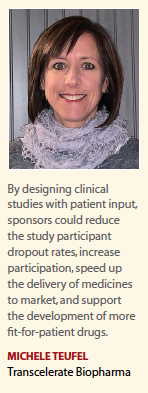 Ms. Malik says. “Additionally, patient community portals such as PatientsLikeMe provide a platform for both pharma companies and patients to communicate with each other and help to build an ecosystem of collaboration," she says.
Ms. Malik says. “Additionally, patient community portals such as PatientsLikeMe provide a platform for both pharma companies and patients to communicate with each other and help to build an ecosystem of collaboration," she says.
Some companies are implementing platforms for patient engagement, such as
TransCelerate Biopharma, which has developed a Patient Protocol Engagement Toolkit (P-PET) that is designed for use by sponsors in engaging patients during the study design phase. The P-PET Toolkit is composed of three main assets: a user guide containing considerations and use case examples, a resource guide containing a question bank to consider when engaging patients in feedback, and templates to leverage when engaging patients in feedback.
“We also developed a Study Participant Feedback Questionnaire Toolkit (SPFQ) which offers three questionnaires for sponsor companies to garner patient feedback at the beginning, middle, and end of a clinical study to help identify burden/impact and to inform steps to help improve the experience and make current and future studies less burdensome to patients," Ms. Teufel says.
Digital ethnography studies are another way to understand the patient experience day-to-day, such as where and how they are treated for their disease, how they feel after a visit, the impact of their disease and treatment and more, Ms. Round says.
FDA and Patient Input
In October 2019, the FDA issued draft guidance on how industry should engage with patients to learn what matters most to them when dealing with their disease and its treatments. The FDA is seeking to develop a systematic approach toward collecting and using patient input and offers considerations such as one-on-one interviews and the use of focus groups, as well as how to ask effective questions.
Mr. Geho says the FDA’s framework will be an important step in establishing patient input as a norm, moving the industry away from working on patients to working with patients in the clinical setting.
Erem Latif, director, patient engagement, Evidera, says the FDA is making an industry-leading effort in developing the patient focused drug development (PFDD) team, holding PFDD panels, and issuing regular guidance documents.
“These guidance documents provide stepwise and detailed instructions on many methods of capturing the patient voice and integrating those insights into the research process," Ms. Latif says. “However, many organizations express some 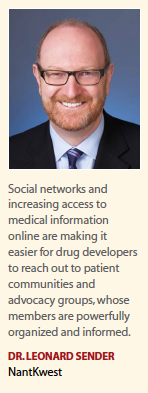 degree of confusion and find the guidance ambiguous. Perhaps a combined effort of FDA guidance, industry created toolkits, and sharing/collaborative learnings across all organizations will help us all achieve the level of patient-centricity we all aspire to achieve."
degree of confusion and find the guidance ambiguous. Perhaps a combined effort of FDA guidance, industry created toolkits, and sharing/collaborative learnings across all organizations will help us all achieve the level of patient-centricity we all aspire to achieve."
The agency has been incrementally increasing its methods for seeking patient feedback, and Ms. Abrams describes these advances as a requirement to bring the right drugs to market. “Including the voice of the patient ensures that the FDA understands what the clinical priorities are for the patient, how the data they provide was used in the program and within the submission, and where it can be found in the report," she says. “This work will continue to drive the change necessary for increasing meaningful patient engagement. However, I would like to see changes happen a bit quicker, given the importance of patient inclusion in drug development."
Ms. Lawhon says there are two areas where she would like to see improvement in the FDA’s guidance for patient input in clinical trials: the inclusion of case studies of how tactics such as informed consent documents, flexible options for follow-up, potential endpoints, and patient-reported outcomes have been implemented.
The second is for the FDA to create incentives for trial sponsors that proactively engage patient advisors early and often throughout the drug development process.(PV)
~~~~~~~~~~~~~~~~~~~~~~~~~
Patients’ Voices
 Bettemarie Bond
Bettemarie Bond
Home Infusion Therapy
@Bettemarie007
I’ve participated in several FDA patient-focused meetings in person and online, for example: Public Meeting on Patient-Focused Drug Development for Chronic Pain and the Mitochondrial Disease Externally-led Patient-Focused Drug Development Meeting. I was a panelist for the FDA Public Meeting on Functional Gastrointestinal (GI) Disorders Patient-Focused Drug Development in 2015.
 Cheryl Ann Borne
Cheryl Ann Borne
ME/CFS
The negative part of participating in a clinical trial was that I was not given all of the test data freely. There were blood tests taken that I was not given the results of, despite writing to the lead investigator requesting them. Then there was a simple test result that turned out to be quite significant, but I never would have known about it had I not happened to overhear the investigator tell another clinician my results. These results were not part of the trial design. And of the three major tests that I had undergone, the investigators gave me only minimal reports. So the data was not as valuable as I had hoped it would be going into the trial. And, I guess I did feel like a lab rat in the end. The one saving grace was that I paid $800 for a comprehensive report from one of the three tests and I used the $700 that I was paid for my trial participation to offset the cost.
 Maria De Leon
Maria De Leon
Parkinson’s and migraine
@DrmariaDe
I have participated in numerous trials. All have been rewarding for me as a patient to have had the opportunity to not only advancing science by working closer with my physicians, but on occasion discovering new treatments that worked. However, I have also seen other studies and have opted out of these when the demands on the patients were so great even for a healthy person, much less for someone who is chronically ill.
 Amanda Greene
Amanda Greene
Lupus
@LAlupusLady
The pros of a clinical trial designed with patients in mind are that it could be easier to recruit and retain study participants. The cons of a clinical trial could include the time it takes to travel to the study site. Many issues need to be considered in creating clinical trials that make it easy for patients to participate.
 Jenn Heater
Jenn Heater
Director of Resources and Advocacy
Migraine
@Medical_oddity
I would love to participate in a clinical trial. I don’t drive long distances due to my condition, so getting to a research university, of which there are many within 15 miles, is difficult. If there were a transportation offset I would be able to be more involved.
 Richie Kahn
Richie Kahn
Director, Strategic Alliances, Glaucomaniac
Glaucoma/Optic Atrophy
@rbaltikahn
There are a number of promising, new, pressure-lowering eye drops being developed for glaucoma. What’s out there works well when used correctly but drop application, adherence, and unwanted side effects remain vexing issues: 30% to 40% of patients don’t use their glaucoma drops correctly and another 30% to 40% aren’t compliant. These are huge problems that can easily determine whether someone goes blind. I don’t want a new eyedrop that burns, causes redness, but only has to be applied once a day. I want a drop that works. Ask for this kind of feedback before going all in on developing another eye drop.
Summer Lyme
Autonomic Neuropathy
I had a negative experience. I went to a research hospital and participated in invasive testing with a promise of treatment if I qualified via failed tests. However, once I failed the tests and research was obtained, I was left without any treatment, making the study of no benefit. I feel like this model of clinical trial was a one-way street with no benefit for the patient.
Michele Nadeem
Chronic Lymphocytic Leukemia (CLL)
@globalcorpcomms
I participated in a Phase II clinical trial from September 2015 until May 2019. I realize I was taking a risk, however I thought of it as receiving tomorrow’s treatment today. Also, I was followed closely and given incredible care as a participant. Overall, it was a fantastic experience other than the side effects.
 Sharon Rose Nissley
Sharon Rose Nissley
Founder
Klippel-Feil Syndrome Freedom
@KFS_Freedom
I have never been approached or asked to participate in a clinical trial, or to attend anything specifically about clinical trials, forums, one-on-one, or as a paid consultant. I have not been asked to contribute or participate in a listening session or any initiative of the FDA to provide patient input which would improve clinical trial design. I actively put myself out into the rare disease space. I live outside of Chicago, so I am probably near opportunities. I am ready to engage and build relationships, but this area of my advocacy has been non-existent.
 Dakota Rosenfelt, Pharm.D.
Dakota Rosenfelt, Pharm.D.
Bleeding disorders
@DRosenfelt, @HemoTool
My experience in a clinical trial was not patient-centric. I was constantly bending to the requirements of the site and the company, and my transportation and time was not included in their considerations.
 Monica Theis
Monica Theis
ACS-CAN Ambassador (American Cancer Society – Cancer Action Network), member of the Parexel Patient Advisory Council
@KickinCancerAss
I have been on two clinical trials and am in the process of researching a third. Both trials were positive experiences. The first trial was through my primary oncologist’s office in Minneapolis. The process to get started was seamless. I had to wait 30 days to go through a cleanse period — I was off treatment during the cleanse portion — but was able to start the qualifying process, bloodwork, and randomization. The toughest part about the first trial was waiting on the randomization and finding out I was not getting the trial drug. It’s hard to filter through that disappointment, but once I moved ahead, the experience remained streamlined and I received good care with all costs covered.
The second trial was through Mayo Clinic. The prequalifying process was a little more difficult as it required more frequent appointments and procedures. Mayo is about two hours away from my house, so the burden of travel and staying in hotels wore on me. As a part of the prequalifying process, I had to get a biopsy done. After five tissue samples, the researchers unfortunately did not get what they needed, and this was frustrating. Luckily, I had tissue in storage with my other oncologist which the researchers could harness. The nurses throughout both clinical trials were fantastic. The information can be overwhelming at times and I wish the data tracking was digital, but otherwise I had overall positive experiences with both trials.
~~~~~~~~~~~~~~~~~~~~~~~~~
Patients and Clinical Development
There is an increasing need to draw on patient knowledge and experience to understand what it is like to live with a specific condition, how care is administered, and the day-to-day use of medicines. This input helps to improve discovery, development, and evaluation of new effective medicines.
Relevance: Patients have knowledge, perspectives, and experiences that are unique and contribute to essential evidence for industry-led research and development.
Fairness: Patients have the same rights to contribute to the medicines’ R&D process as other stakeholders and have access to knowledge and experiences that enable effective engagement.
Equity: Patient involvement in medicines R&D contributes to equity by seeking to understand the diverse needs of patients with particular health issues, balanced against the requirements of industry.
Capacity building: Patient involvement processes address barriers to involving patients in medicines R&D and build capacity of patients and research organizations to work together.
Source: EUPATI Guidance for Patient Involvement in
Medicines Research and Development


















